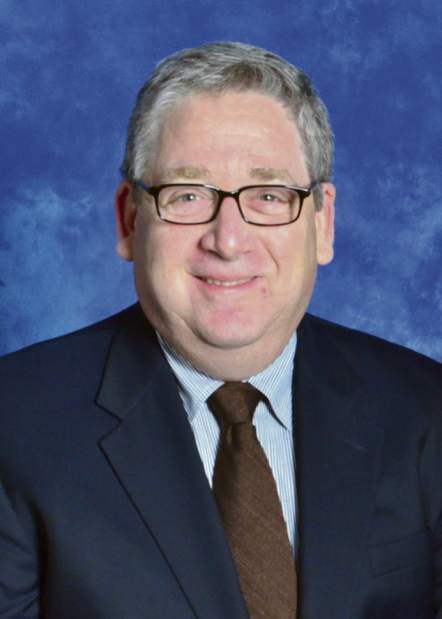Allegheny Health Network shakes up leadership
Financially strained Allegheny Health Network announced a leadership overhaul Tuesday that places physicians at the helm of its North Side and Monroeville hospitals.
The changes mark a growing industry belief that leaders who already live in the world of medicine can better command hospital operations, said AHN Chief Medical Officer Dr. Tony Farah, a cardiologist.
“This is not all about money,” Farah said. “Nobody knows better than clinicians what the needs of the patients truly are. If you focus on quality and safety, the finances will follow.”
As part of the restructuring, Dr. Jeffrey Cohen takes over as president of flagship Allegheny General Hospital on June 1. Cohen, a urologist, is director of Allegheny General's urology division.
Michael Harlovic, who had been Allegheny General's president for the past two years, is leaving the organization. Officials did not provide a reason for his departure, but Farah said the parting was mutual after officials offered Harlovic the chance to pursue other positions within AHN, which he declined.
AHN, the region's second-largest hospital network behind UPMC, is also turning to a doctor to lead Forbes Hospital in Monroeville. The system announced Dr. Mark Rubino has been appointed president of Forbes. He has served as the hospital's chief medical officer since 2013.
Duke Rupert, who has held various leadership roles at Allegheny Health, will move from his current role as president and CEO at Forbes to serve as chief operating officer of Allegheny General.
Rubino has overseen a $36 million strategy at 349-bed Forbes, including the expansion of its obstetrics program and the launch of its Level 2 trauma center.
Farah said proposed federal legislation could significantly change health insurance reimbursement to value-based fees rather than fee-for-service health care, which guarantees payment for every test and procedure hospitals perform. In the future, hospitals will likely receive set fees each month to manage patients' care. That system would create incentives for hospitals to more carefully consider which tests and procedures to perform, how to do them more efficiently and how to keep patients from having to come back for more treatment.
“We believe that, when it comes to hospitals, having unique clinical insight at the top level of our hospital facilities will be a key component of how we deliver care into the future,” Farah said. “That has been missing across the country.”
A 2011 study published in the journal Social Science & Medicine by scholar Amanda Goodall found 300 top-ranked American hospitals' overall quality scores were about 25 percent higher in those with physician CEOs compared with hospitals led by executives with nonmedical backgrounds.
Goodall, an assistant professor at Cass Business School in London, told the Tribune-Review that physician-leaders are still in the minority in the United States — but the tide is turning.
“Why? In short, because they are experts in the core business of the organizations they lead,” she said. “They are credible, they understand how to motivate other physicians and how to assess others. If we believe that leaders are the standard bearers for the organizations they serve, then doesn't it make sense that they first bear that standard?”
Farah said prominent health care systems, including Cleveland Clinic and Mayo Clinic, embrace the business strategy of pairing physician presidents with chief operating officers. AHN's new president and CEO Cynthia Hundorfean, a former longtime Cleveland Clinic executive, was appointed in February to replace John Paul.
The leadership changes “will further position and strengthen our organization as a patient-centered and physician-led enterprise,” Hundorfean told employees in a memo Tuesday. “It is not enough that our physicians are well versed in our enterprise goals and strategic plans — they must be leaders in setting those goals and crafting those plans, and they need to be the key drivers of our success in implementing them.”
Goodall agreed with the assessment.
“It is easier to train a doctor to become a manager than the alternative,” she said. “But doctors need management and leadership training — this has to be a given. This is why places like the Cleveland Clinic invest so much in this kind of training for their physicians.”
Stephen Foreman, an associate professor of health care administration at Robert Morris University, said physician leaders can be problematic as well.
“It's probably not good to put a physician in charge just to have a physician in the role,” he said. “Physicians can be effective leaders given the right training and experience.”
It isn't the first time Allegheny Health hospitals turned to physicians for leadership roles. Dr. Christopher Olivia, an ophthalmologist, served as the system's CEO from March 2008 through June 2011. When he resigned, he walked away with a $7 million-plus severance package, according to tax filings.
Allegheny Health, which lost $39 million in 2015, this month reported an operating loss of $17.8 million for the first three months of 2016.
Parent Highmark Health has invested more than $1 billion in the hospital network, which was formed in 2013. In addition to Allegheny General and Forbes, it includes West Penn Hospital in Bloomfield, Allegheny Valley Hospital in Natrona Heights, Jefferson Hospital in the South Hills, St. Vincent Hospital in Erie and Canonsburg Hospital.
Ben Schmitt is a Tribune-Review staff writer. Reach him at 412-320-7991 or bschmitt@tribweb.com.



